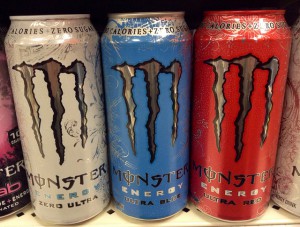By admin on September 11, 2014
On August 26, 2014, the U.S. Court of Appeals for the Third Circuit held in Ferring Pharmaceuticals, Inc. v. Watson Pharmaceuticals, Inc. that parties seeking injunctive relief under the Lanham Act will not be afforded a presumption of irreparable harm and must demonstrate that irreparable harm is likely. In affirming the lower court’s decision to deny the plaintiff’s request for an injunction, the Court of Appeals based its ruling on precedent set by two recent U.S. Supreme Court cases, eBay Inc. v. MercExchange, L.L.C. and Winter v. Natural Resources Defense Council, Inc.
Ferring is yet another precedential decision, among several other recent cases, that demonstrates a continuing trend in rejecting a presumption of irreparable harm for parties seeking injunctions in actions involving claims under the Lanham Act. The Second and Ninth Circuits also have applied this rationale to copyright actions. An even greater number of courts across the nation have recognized that the eBay analysis is applicable in lawsuits filed pursuant to the Lanham Act and concurred that it casts doubt on the application of the presumption of irreparable harm, but have nevertheless declined to rule on the matter.
The Ferring litigation arose from a dispute among two New Jersey-based pharmaceutical companies that market competing products designed to assist women undergoing in vitrofertilization to become and remain pregnant. In the complaint, filed on September 17, 2012, plaintiff Ferring alleged that defendant Watson coordinated two programs, during which Watson conveyed false and misleading information about Ferring’s competing product in violation of section 43(a) of the Lanham Act, 15 U.S.C. § 1125(a), the New Jersey Consumer Fraud Act, and New Jersey common law.
Ferring moved for a preliminary injunction on November 9, 2012, seeking to obtain corrective advertising and enjoin Watson from making any additional false statements. In denying Ferring’s motion, the district court found that Ferring was not entitled to a presumption of irreparable harm and had failed to demonstrate a likelihood of irreparable harm.
On appeal, Ferring argued that a presumption of irreparable harm should be applied in Lanham Act comparative false advertising cases and, accordingly, the district court erred in declining to permit Ferring to benefit from this presumption for the purposes of obtaining a preliminary injunction. Watson, in turn, argued that the Third Circuit has never recognized this presumption; the U.S. Supreme Court’s rulings in eBay and Winter do not support the application of this presumption; and, without the presumption, Ferring is unable to demonstrate a likelihood of irreparable harm.
Where a party in a comparative false advertising case, like Ferring, seeks a preliminary injunction, courts in various jurisdictions have historically permitted the application of the presumption of irreparable harm after a likelihood of success on the merits has been demonstrated. The Third Circuit pointed out, however, that this rationale preceded eBay and Winter, which set the precedent that broad categorical rules are inappropriate when determining whether to award injunctive relief, a determination that should be made within the court’s discretion and in accordance with the traditional principles of equity. The Court of Appeals alsocited a 2013 Ninth Circuitdecision as concurring analysis, which held that “the likelihood of irreparable injury may no longer be presumed from a showing of likelihood of success on the merits.”
The reasoning employed in Ferring provides a clear interpretation and explanation of precedent set by the Supreme Court with regard to issuing injunctions in actions not only involving claims under the Lanham Act, but in various types of cases governed by similar standards, and certainly reinforces the growing trend to reject the application of the presumption of irreparable harm for parties seeking injunctions in the future.
Please see the following citations for further reading on this topic:
eBay Inc. v. MercExchange, L.L.C., 547 U.S. 388 (2006)
Winter v. Natural Resources Defense Council, Inc., 555 U.S. 7 (2008)
Ferring Pharms. v. Watson Pharms., 2014 U.S. App. LEXIS 16426 (3d Cir. 2014)

 That decision noted that the jury listened to testimony from the employee of Monster who prepared the offending video, where he admitted that he lacked any training in music licensing. Nevertheless, the Monster employee also testified he previously produced a dozen similar “recap” videos for Monster. In those earlier videos, the employee testified that he did contact the artists to seek permission to use the respective artists’ music. The Monster employee was therefore familiar with the process of seeking authorization. Notwithstanding this awareness, the Monster employee did not seek permission from the Beastie Boys or their manager to use their music, nor did he believe that anyone else at Monster had done so. Judge Englemayer held that the jury could thereby determine that the Monster employee acted in reckless disregard of the Beastie Boys rights when using the Beastie Boys’ music without authorization in the promotional video.
That decision noted that the jury listened to testimony from the employee of Monster who prepared the offending video, where he admitted that he lacked any training in music licensing. Nevertheless, the Monster employee also testified he previously produced a dozen similar “recap” videos for Monster. In those earlier videos, the employee testified that he did contact the artists to seek permission to use the respective artists’ music. The Monster employee was therefore familiar with the process of seeking authorization. Notwithstanding this awareness, the Monster employee did not seek permission from the Beastie Boys or their manager to use their music, nor did he believe that anyone else at Monster had done so. Judge Englemayer held that the jury could thereby determine that the Monster employee acted in reckless disregard of the Beastie Boys rights when using the Beastie Boys’ music without authorization in the promotional video.